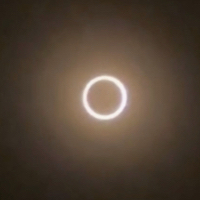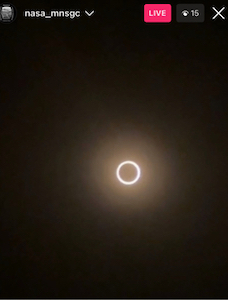On Wednesday, October 11, 2023, after packing all of the essential equipment, the University of Minnesota’s Nationwide Eclipse Ballooning Project (NEBP) team, all-undergraduates (plus Professor Flaten!), set off for New Mexico to study an annular solar eclipse from stratospheric ballooning platforms.
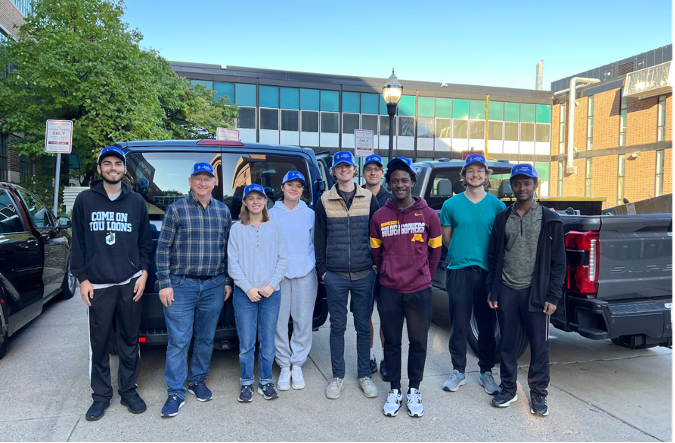 Annular eclipse team (left to right): Jesse, Dr. James Flaten, Jasmine, Jess, Ashton, Alex, Seyon, Ethan, Yoel.
Annular eclipse team (left to right): Jesse, Dr. James Flaten, Jasmine, Jess, Ashton, Alex, Seyon, Ethan, Yoel.After the two-day, nearly 20-hour drive, the team arrived in New Mexico. They scoped out the area and visited potential launch and ground station sites.
Through this, to the great pleasure of the team members, they discovered that the launch site they settled on had puppies(!), cared for by the town’s residents.
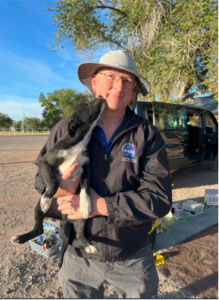
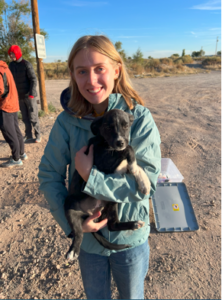
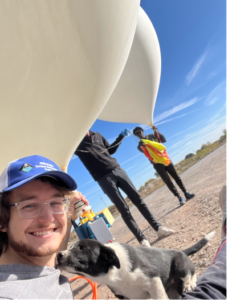
Saturday, October 14th, was finally the day of the eclipse. The ground station crew, Alex Halatsis, Jesse Cook, Jess Glamm, drove to Vaughn, New Mexico, and the launch site crew, Jasmine Thayer, Dr. James Flaten, Ashton Posey, Seyon Wallo, Yoel Mekbeb, Ethan Thompson-Jewell, drove to the town of Willard, New Mexico.
Two Balloons
The launch crew quickly got set up and prepared payloads for the two “stacks” to fly.
Two stratospheric balloons were launched during the eclipse. The first balloon, the non-NEBP balloon, was launched at about 9 a.m. MST. The second, the NEBP balloon, was launched at about 9:30 a.m. MST.
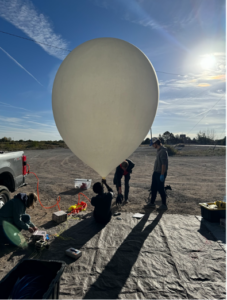
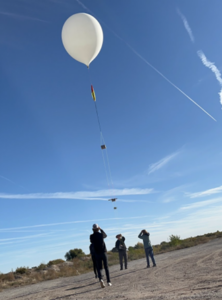
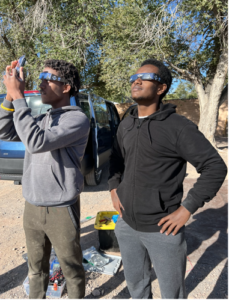
Once they were launched, it was time to observe the “ring of fire” eclipse. The team’s SunSpotter solar telescope was a hit among team members and others in Willard who were observing the eclipse from there.
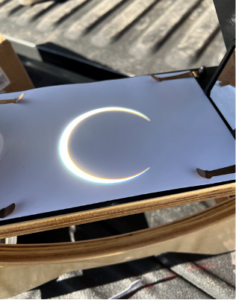
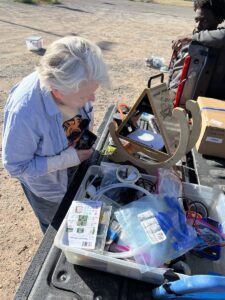
The team also live-streamed a ground view of the eclipse from team member Ashton’s phone on the Team Instagram account.
After the eclipse was over, the team packed up their equipment and started chasing both payloads. The NEBP payload, in particular, drifted a long way because the cut mechanism failed so it returned to the ground slowly “under (vented) balloon” rather than faster “under parachute.” When both stacks were recovered, data and footage were reviewed.
The team made the long drive back to Minnesota, returning on Monday, October 16, 2023.
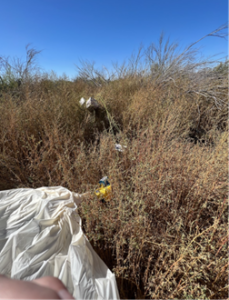
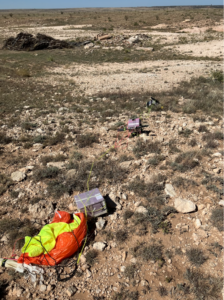
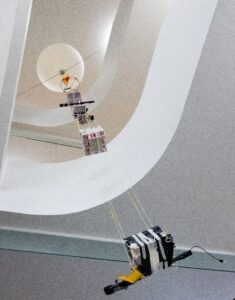
The following week, the team displayed hardware flown during the eclipse and shared short video clips from a 360-degree camera on the NEBP stack at the AEM Open House on October 26, 2023.
The videos included footage of the launch, the payload at altitude, and the landing.
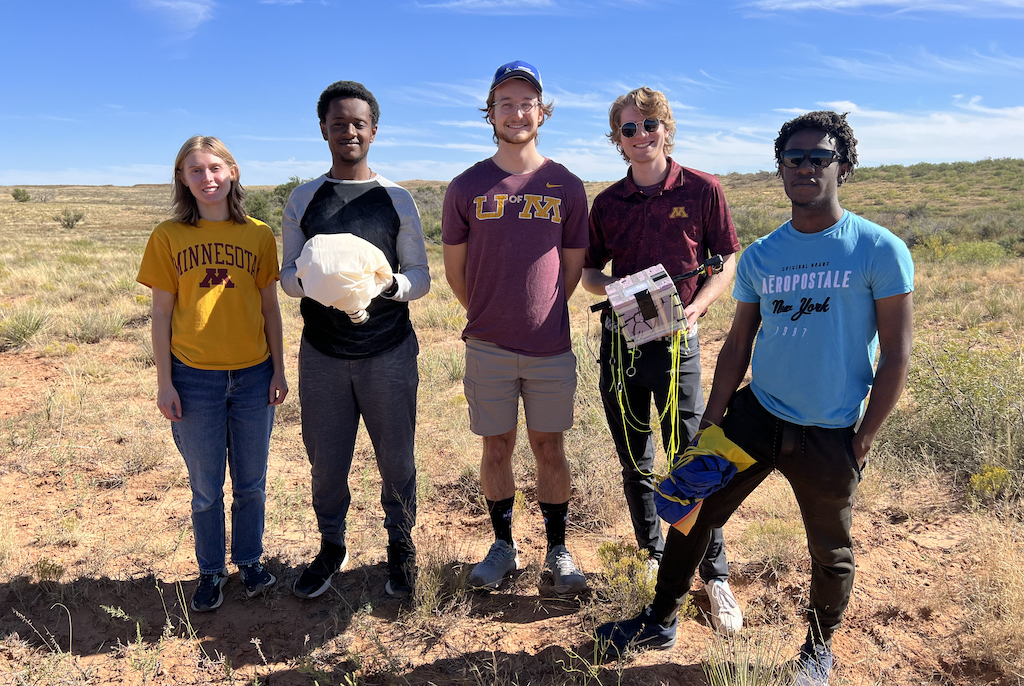
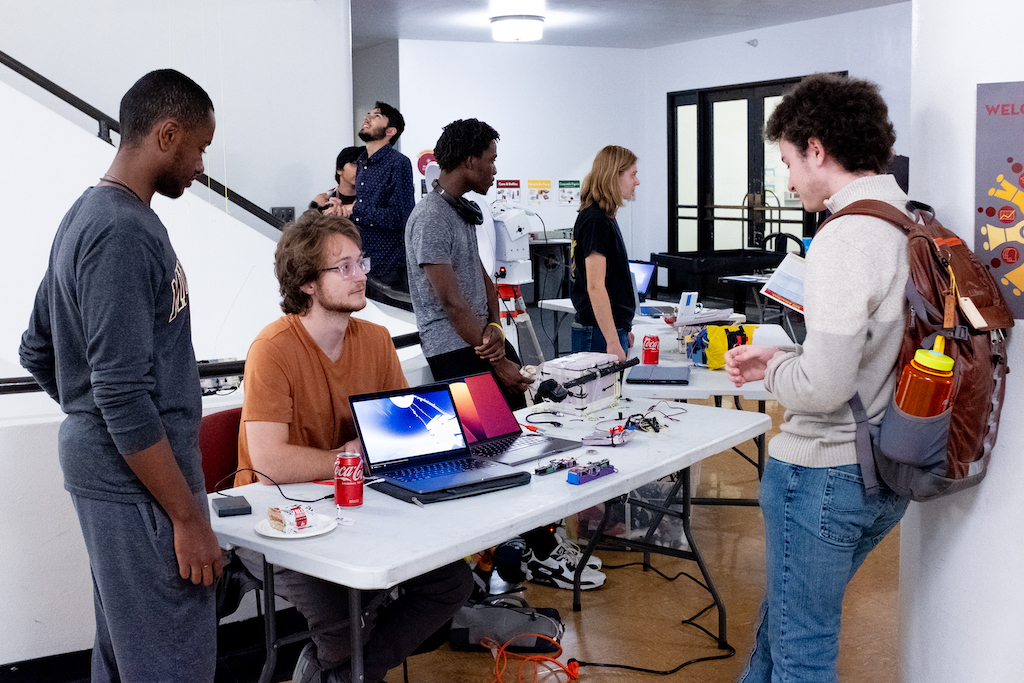
April 2024 Total Eclipse
Next spring, the team will travel to Indiana to fly additional balloon-borne experiments during a total solar eclipse on April 8, 2024. This time, they will be in the path of totality when the moon completely blocks out the face of the sun for several minutes. Flight camera footage from the total eclipse promises to be more dramatic.
Related Links
